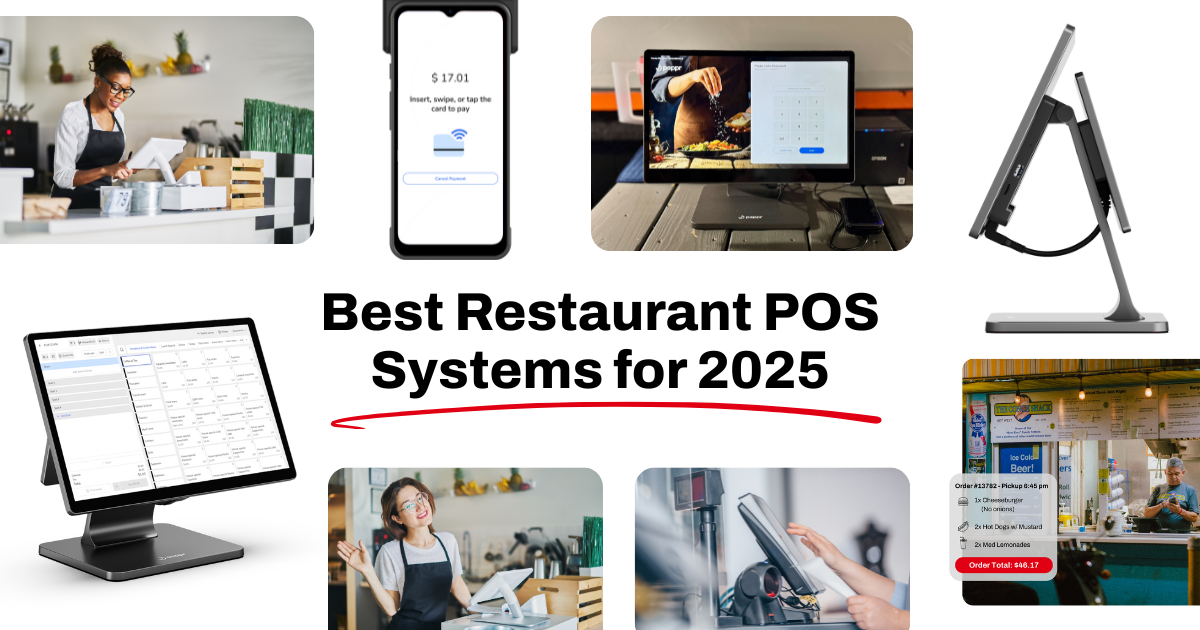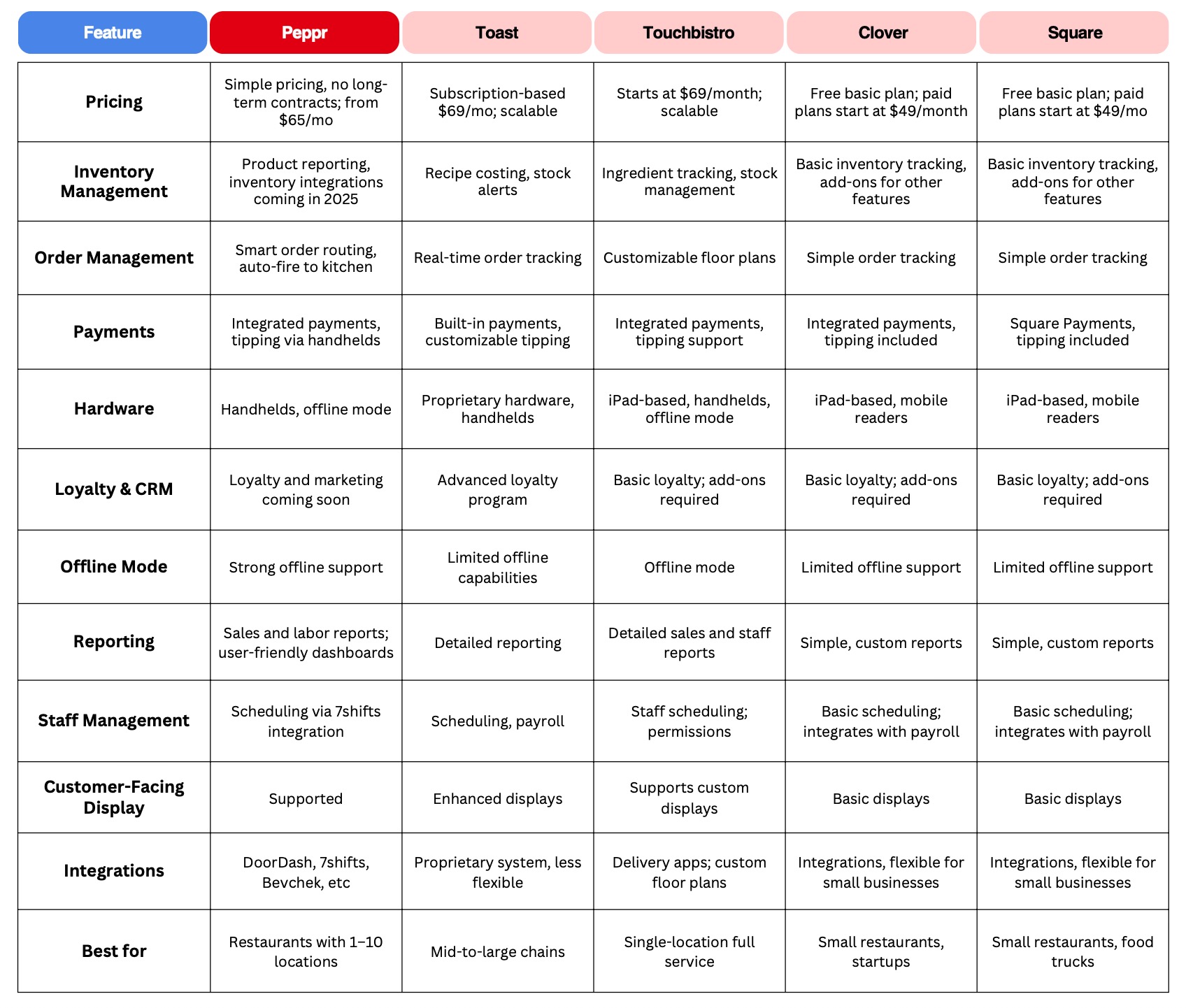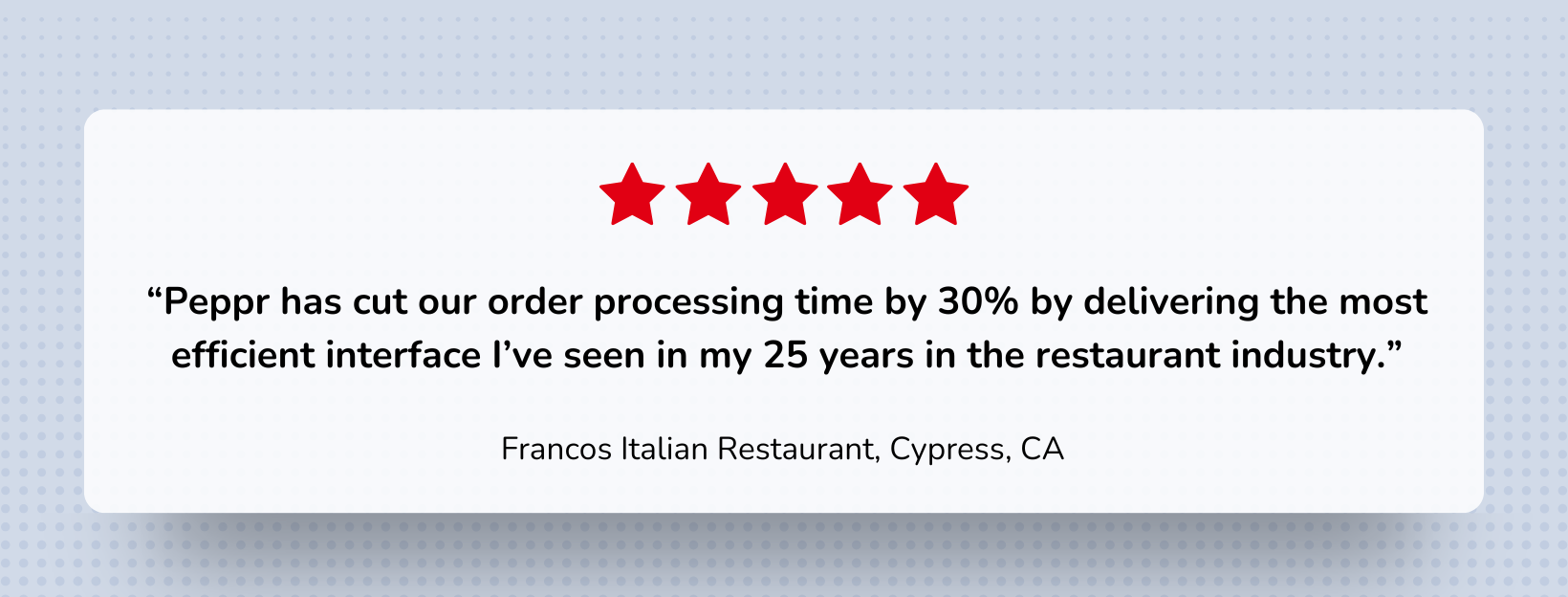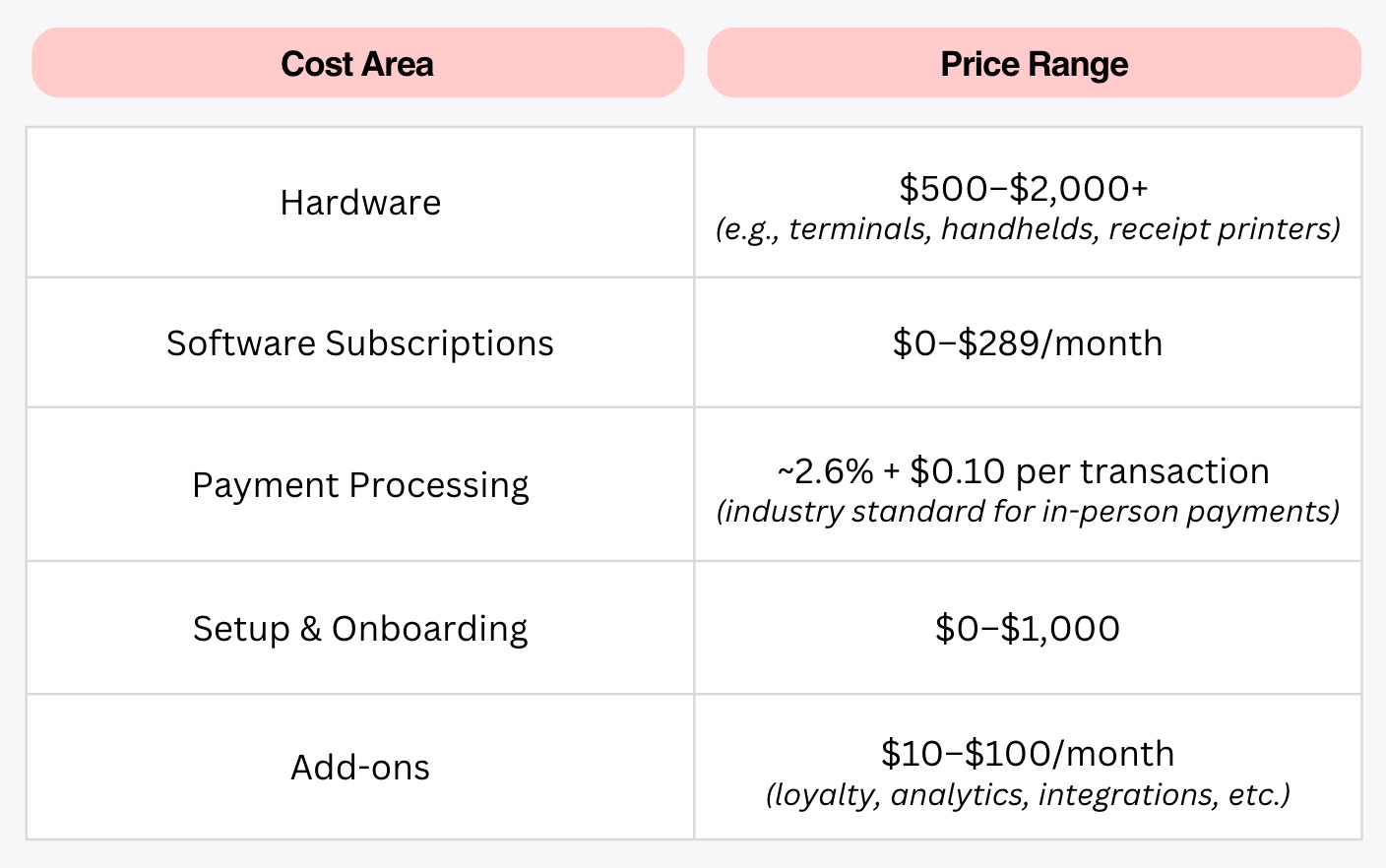Best restaurant POS systems compared: Peppr, Toast, TouchBistro, Square & Lightspeed.

What was once just a simple cash register now manages everything from order flow to guest engagement. Running a restaurant today goes beyond cooking great meals and creating a welcoming atmosphere.
You need systems designed for the realities of restaurant operations—tech that works as hard as you do behind the scenes, so you don't have to juggle tickets, tabs, and to-do lists.
From all-in-one platforms with enterprise-grade tools to simple setups ideal for independent restaurants and startups, today's point-of-sale (POS) systems cater to a wide range of needs. But don't get distracted by the bells and whistles.
In this guide, we'll compare five of the top restaurant POS systems on the market. Each one offers something unique, whether you're aiming to grow, simplify, or finally ditch the spreadsheets.
A restaurant POS system is the central hub for managing your daily operations, from order taking and payment processing to overseeing inventory and transactions.
Modern, cloud-based POS systems go far beyond the register. They’ve evolved into a fully integrated tech ecosystem that streamlines communication between the front and back of house, simplifies checkout, and tracks data in real-time.
Whether you're growing your restaurant or streamlining operations, the right POS can enhance efficiency and ensure a seamless experience across dine-in, takeout, and delivery channels.
With the right setup, you’ll have everything you need to run smoothly, from stationary POS terminals and handheld POS devices to kitchen display systems (KDS), receipt printers, and more.

Short on time? This at-a-glance summary gives you a bird's-eye view of the leading POS systems on the market. Use this chart to quickly spot which platforms deserve a closer look based on your restaurant’s needs.

Every restaurant is unique, and the best POS system for one may not fit another. That's why we've handpicked five top platforms, each chosen for their strengths across different restaurant types.
Whether you run a bustling café, a cozy bistro, or anything in between, we'll help you find the perfect fit.

Best for: Full-service independents, fast-paced restaurants, and small multi-location brands in California or Texas
Peppr is purpose-built for how restaurants actually operate. With real tableside ordering, local support teams, and robust integrations, Peppr is a tech partner that gets what service pressure feels like on a Saturday night.
Core Features:
Automation Perks:
Benefits:
New in 2025:
Bonus: Peppr offers on-site launch support and dedicated guest success managers, a rare feature among POS competitors.
Best for: Medium to large restaurants with multiple locations needing centralized control
Toast is an enterprise-grade POS solution that offers deep feature sets and reporting. It’s a strong option for chains, but comes with contracts and higher fees.
Core Features:
Proprietary Ecosystem:
Benefits:
Best for: Single-location, full-service restaurants
TouchBistro is known for its hybrid model and is a favorite for fine dining settings.
Core Features:
Benefits:
Best for: Fine dining or complex operations
Lightspeed offers premium POS functionality for upscale restaurants and multi-location chains looking for consistency and custom workflows.
Core Features:
Benefits:
Best for: Budget-conscious small restaurants and cafes needing a simple, fast launch
Square is the entry-level favorite, especially among startups and QSRs. And unless you get it heavily customized, Square lacks restaurant-specific depth.
Core Features:
Benefits:
The right POS can pay for itself, but only if you know what you’re getting into. Here’s what you can expect to spend on a standard restaurant POS system.

Important: The final pricing still depends on your restaurant’s size, service model (quick-service vs. full-service), and whether you’re using a cloud-based system or proprietary hardware.
Hidden costs that come with most systems:
If you run a high-volume, service-oriented restaurant and need tech that adapts to your floor plan and team’s pace, Peppr is your best bet. It combines automation, mobility, and simplicity in a way that rivals can’t match.
After launching with Peppr, a restaurant in Anaheim, California, cut order times by 50%, reduced errors during peak hours, and saw a clear uptick in repeat guests. Their team also saved hours each week thanks to a smooth setup and fast, reliable support.
Here’s why Peppr is the most complete and future-ready POS system:
What if your team spent less time fixing mistakes and more time delivering great service?
With Peppr, operators have sped up order flow, minimized chaos during peak hours, and seen real gains in guest retention, all without a complicated rollout. From local setup to everyday support, we’re with you every step of the way. No long contracts. No mystery pricing. Just a system that fits your floor, your team, and your goals.
Book a free demo today and get a real look at what your operations could be with Peppr behind the scenes.
Cloud-based POS systems like Peppr allow real-time access from anywhere, integrate easily with third-party tools, and are cheaper to maintain. Traditional POS setups require on-premise servers, manual updates, and often higher upfront costs.
Peppr is a top choice thanks to its affordability, ease of use, and local support. But Square is also great for ultra-lean setups and startups.
Yes. Most modern POS platforms support data migration for menus, guest data, and inventory.
Yes. Peppr integrates directly with DoorDash, sending orders to the POS without manual entry. Toast, TouchBistro, Lightspeed, and Square also support major delivery apps (e.g., DoorDash, Uber Eats).
Broken down by POS provider:
Yes. Cloud-based systems like Peppr offer high reliability with 99.9% uptime, automatic backups, and data security via encryption. Offline modes ensure you never miss a sale, even during internet outages.
